Daniel Borrajo
The Subset Sum Matching Problem
Aug 26, 2025Abstract:This paper presents a new combinatorial optimisation task, the Subset Sum Matching Problem (SSMP), which is an abstraction of common financial applications such as trades reconciliation. We present three algorithms, two suboptimal and one optimal, to solve this problem. We also generate a benchmark to cover different instances of SSMP varying in complexity, and carry out an experimental evaluation to assess the performance of the approaches.
GenPlanX. Generation of Plans and Execution
Jun 12, 2025Abstract:Classical AI Planning techniques generate sequences of actions for complex tasks. However, they lack the ability to understand planning tasks when provided using natural language. The advent of Large Language Models (LLMs) has introduced novel capabilities in human-computer interaction. In the context of planning tasks, LLMs have shown to be particularly good in interpreting human intents among other uses. This paper introduces GenPlanX that integrates LLMs for natural language-based description of planning tasks, with a classical AI planning engine, alongside an execution and monitoring framework. We demonstrate the efficacy of GenPlanX in assisting users with office-related tasks, highlighting its potential to streamline workflows and enhance productivity through seamless human-AI collaboration.
On the Temporal Question-Answering Capabilities of Large Language Models Over Anonymized Data
Apr 10, 2025Abstract:The applicability of Large Language Models (LLMs) in temporal reasoning tasks over data that is not present during training is still a field that remains to be explored. In this paper we work on this topic, focusing on structured and semi-structured anonymized data. We not only develop a direct LLM pipeline, but also compare various methodologies and conduct an in-depth analysis. We identified and examined seventeen common temporal reasoning tasks in natural language, focusing on their algorithmic components. To assess LLM performance, we created the \textit{Reasoning and Answering Temporal Ability} dataset (RATA), featuring semi-structured anonymized data to ensure reliance on reasoning rather than on prior knowledge. We compared several methodologies, involving SoTA techniques such as Tree-of-Thought, self-reflexion and code execution, tuned specifically for this scenario. Our results suggest that achieving scalable and reliable solutions requires more than just standalone LLMs, highlighting the need for integrated approaches.
The Value of Goal Commitment in Planning
Mar 12, 2025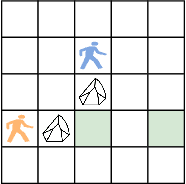
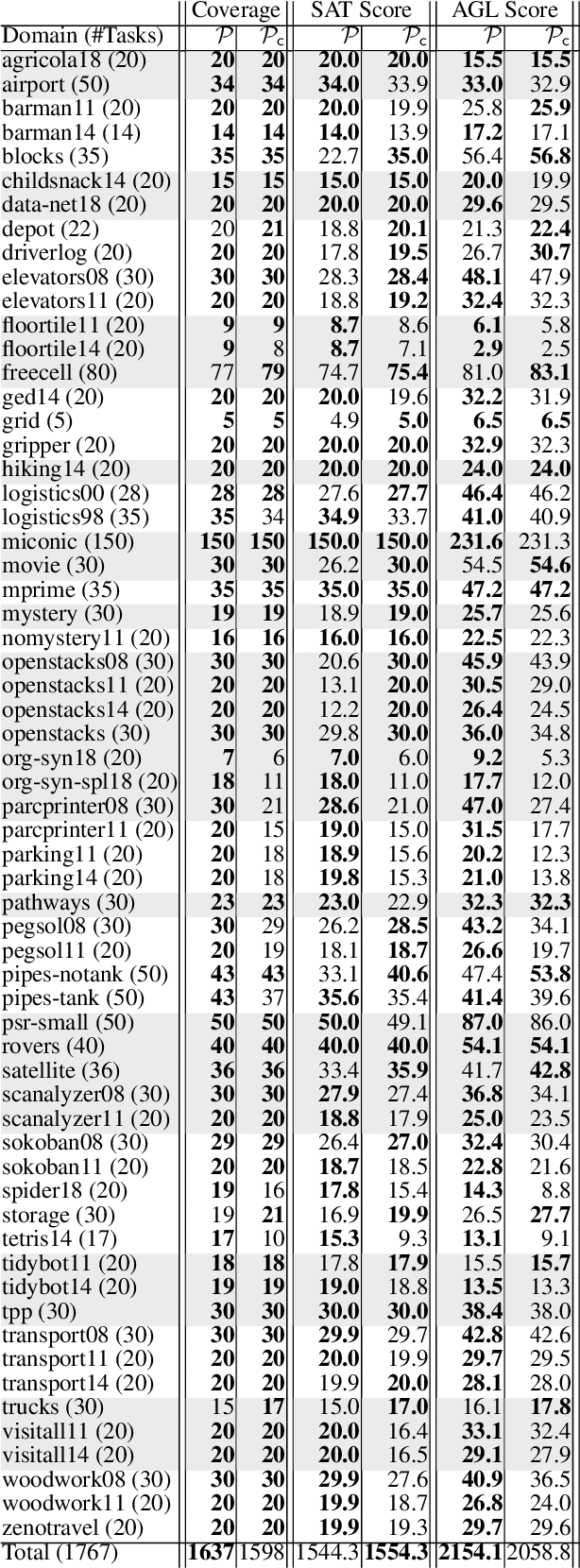
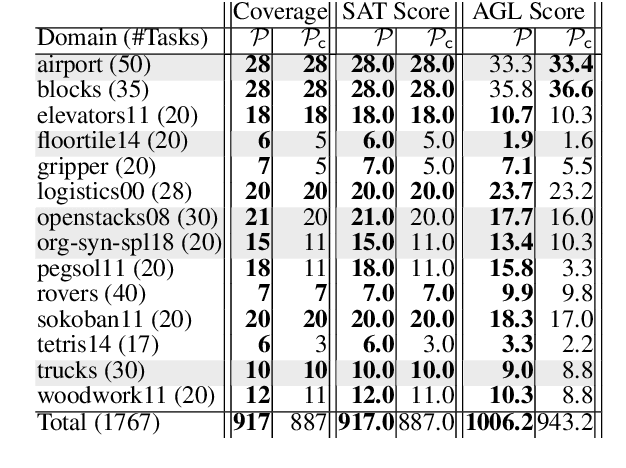
Abstract:In this paper, we revisit the concept of goal commitment from early planners in the presence of current forward chaining heuristic planners. We present a compilation that extends the original planning task with commit actions that enforce the persistence of specific goals once achieved, thereby committing to them in the search sub-tree. This approach imposes a specific goal achievement order in parts of the search tree, potentially introducing dead-end states. This can reduce search effort if the goal achievement order is correct. Otherwise, the search algorithm can expand nodes in the open list where goals do not persist. Experimental results demonstrate that the reformulated tasks suit state-of-the-art agile planners, enabling them to find better
Hypercone Assisted Contour Generation for Out-of-Distribution Detection
Jan 17, 2025Abstract:Recent advances in the field of out-of-distribution (OOD) detection have placed great emphasis on learning better representations suited to this task. While there are distance-based approaches, distributional awareness has seldom been exploited for better performance. We present HAC$_k$-OOD, a novel OOD detection method that makes no distributional assumption about the data, but automatically adapts to its distribution. Specifically, HAC$_k$-OOD constructs a set of hypercones by maximizing the angular distance to neighbors in a given data-point's vicinity to approximate the contour within which in-distribution (ID) data-points lie. Experimental results show state-of-the-art FPR@95 and AUROC performance on Near-OOD detection and on Far-OOD detection on the challenging CIFAR-100 benchmark without explicitly training for OOD performance.
TRIM: Token Reduction and Inference Modeling for Cost-Effective Language Generation
Dec 10, 2024



Abstract:The inference cost of Large Language Models (LLMs) is a significant challenge due to their computational demands, specially on tasks requiring long outputs. However, natural language often contains redundancy, which presents an opportunity for optimization. We have observed that LLMs can generate distilled language-concise outputs that retain essential meaning, when prompted appropriately. We propose a framework for saving computational cost, in which a shorter distilled output from the LLM is reconstructed into a full narrative by a smaller model with lower inference costs. Our experiments show promising results, particularly in general knowledge domains with 20.58% saved tokens on average with tiny decrease in evaluation metrics, hinting that this approach can effectively balance efficiency and accuracy in language processing tasks.
Projection Abstractions in Planning Under the Lenses of Abstractions for MDPs
Dec 03, 2024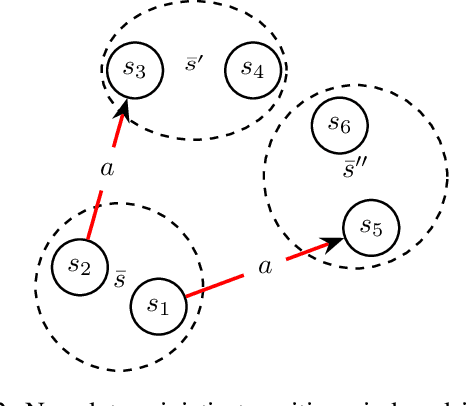
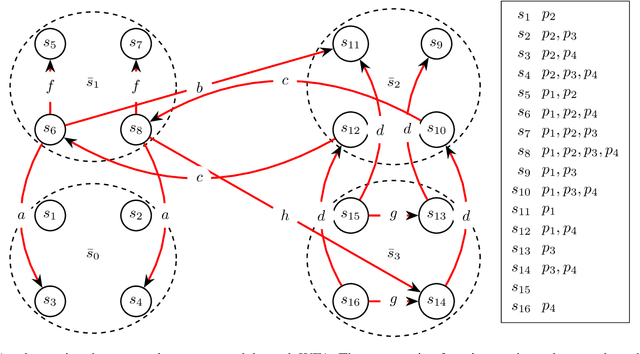
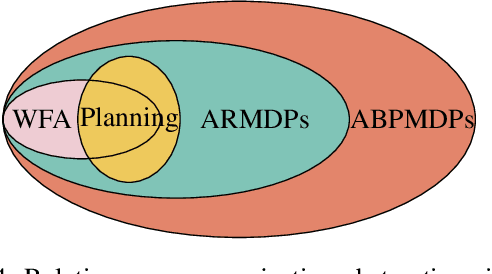
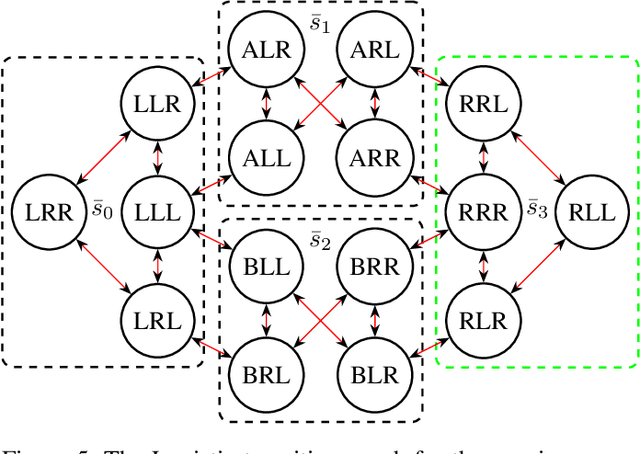
Abstract:The concept of abstraction has been independently developed both in the context of AI Planning and discounted Markov Decision Processes (MDPs). However, the way abstractions are built and used in the context of Planning and MDPs is different even though lots of commonalities can be highlighted. To this day there is no work trying to relate and unify the two fields on the matter of abstractions unraveling all the different assumptions and their effect on the way they can be used. Therefore, in this paper we aim to do so by looking at projection abstractions in Planning through the lenses of discounted MDPs. Starting from a projection abstraction built according to Classical or Probabilistic Planning techniques, we will show how the same abstraction can be obtained under the abstraction frameworks available for discounted MDPs. Along the way, we will focus on computational as well as representational advantages and disadvantages of both worlds pointing out new research directions that are of interest for both fields.
Shining a Light on Hurricane Damage Estimation via Nighttime Light Data: Pre-processing Matters
Oct 29, 2024Abstract:Amidst escalating climate change, hurricanes are inflicting severe socioeconomic impacts, marked by heightened economic losses and increased displacement. Previous research utilized nighttime light data to predict the impact of hurricanes on economic losses. However, prior work did not provide a thorough analysis of the impact of combining different techniques for pre-processing nighttime light (NTL) data. Addressing this gap, our research explores a variety of NTL pre-processing techniques, including value thresholding, built masking, and quality filtering and imputation, applied to two distinct datasets, VSC-NTL and VNP46A2, at the zip code level. Experiments evaluate the correlation of the denoised NTL data with economic damages of Category 4-5 hurricanes in Florida. They reveal that the quality masking and imputation technique applied to VNP46A2 show a substantial correlation with economic damage data.
Enabling Advanced Land Cover Analytics: An Integrated Data Extraction Pipeline for Predictive Modeling with the Dynamic World Dataset
Oct 11, 2024



Abstract:Understanding land cover holds considerable potential for a myriad of practical applications, particularly as data accessibility transitions from being exclusive to governmental and commercial entities to now including the broader research community. Nevertheless, although the data is accessible to any community member interested in exploration, there exists a formidable learning curve and no standardized process for accessing, pre-processing, and leveraging the data for subsequent tasks. In this study, we democratize this data by presenting a flexible and efficient end to end pipeline for working with the Dynamic World dataset, a cutting-edge near-real-time land use/land cover (LULC) dataset. This includes a pre-processing and representation framework which tackles noise removal, efficient extraction of large amounts of data, and re-representation of LULC data in a format well suited for several downstream tasks. To demonstrate the power of our pipeline, we use it to extract data for an urbanization prediction problem and build a suite of machine learning models with excellent performance. This task is easily generalizable to the prediction of any type of land cover and our pipeline is also compatible with a series of other downstream tasks.
On Learning Action Costs from Input Plans
Aug 20, 2024Abstract:Most of the work on learning action models focus on learning the actions' dynamics from input plans. This allows us to specify the valid plans of a planning task. However, very little work focuses on learning action costs, which in turn allows us to rank the different plans. In this paper we introduce a new problem: that of learning the costs of a set of actions such that a set of input plans are optimal under the resulting planning model. To solve this problem we present $LACFIP^k$, an algorithm to learn action's costs from unlabeled input plans. We provide theoretical and empirical results showing how $LACFIP^k$ can successfully solve this task.
 Add to Chrome
Add to Chrome Add to Firefox
Add to Firefox Add to Edge
Add to Edge